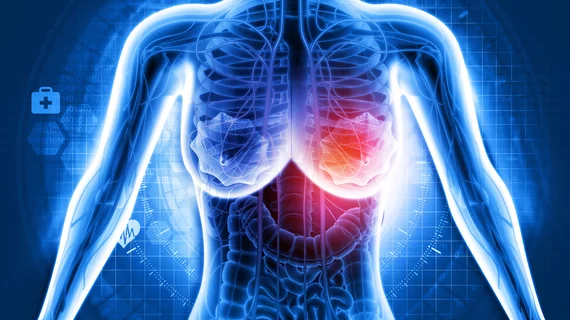MR-directed enhanced mammography detects more malignancies than MR-directed ultrasound
MRI-directed contrast enhanced mammography could serve as a useful tool for biopsy planning when suspicious lesions are detected.
According to a new study published in the American Journal of Roentgenology, MRI-directed CEM could suffice either as an alternative to MRI-directed ultrasound or as a complimentary tool for biopsy planning. Experts arrived at this conclusion after analyzing the cases of 120 patients who underwent biopsy after suspicious lesions were detected on their MRI exams between September 2014 and July 2020.
"Contrast-enhanced mammography (CEM) is an emerging imaging modality that detects a higher percentage of malignant lesions than does conventional mammography," the study's corresponding author Matthew M. Miller, MD, PhD, of the University of Virginia Health System, Department of Radiology and Medical Imaging, and colleagues explained.
The experts used histopathologic results and follow-up imaging to compare the outcomes of patients who underwent MRI-directed CEM, MRI-directed ultrasound or both combined. Out of the 109 lesions included in the analysis, 21 were malignant.
The combination of MRI-directed CEM and ultrasound yielded the highest lesion detection rate, at 77.1%. In comparison, MRI-directed CEM alone achieved a detection rate of 69.7% and MRI-directed ultrasound had a rate of 45.9%. For malignant lesion identification, MRI-directed CEM yielded a detection rate of 95.7% compared to 78.3% for MRI-directed ultrasound.
An additional side-by-side comparison of the two methods revealed that more lesions (31.2%) were seen on the CEM exams only compared the ultrasound exams only (7.3%).
All these figures combined prompted the authors of the study to lend their support to the use of MRI-directed CEM where applicable.
“MRI-directed CEM may be a useful alternate or complementary tool to MRI-directed ultrasound in biopsy planning for suspicious MRI lesions, facilitating use of biopsy guidance methods other than MRI guidance,” they concluded.
The study abstract can be viewed here.

